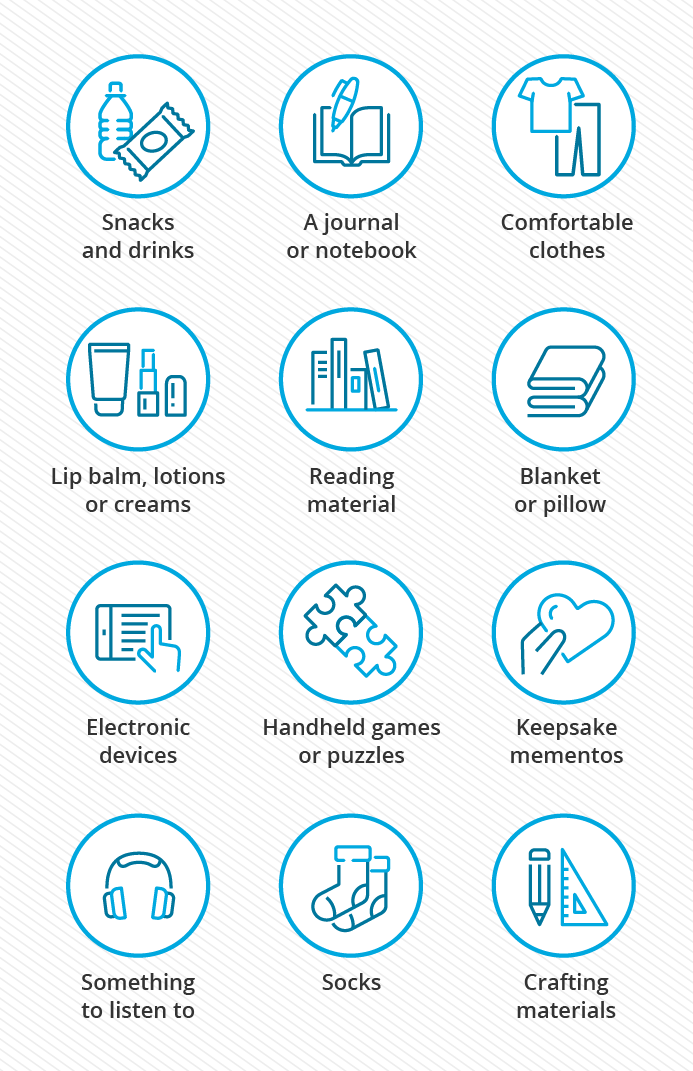During chemotherapy, your care team may discuss treatment using words you’ve never heard before.
You aren’t alone. Becoming knowledgeable about treatment—including the words used to describe everything from the treatment itself to its side effects—may help you feel more comfortable and empowered.
New words you may hear during chemotherapy
- Adjuvant therapy: After receiving a primary cancer treatment, your doctor may suggest adjuvant therapy to lower the risk of recurrence. Adjuvant therapy includes chemotherapy, targeted therapy and radiation therapy.
- Anemia: This condition occurs when the number of red blood cells is lower than normal. Anemia is a side effect of chemotherapy and radiation.
- Alopecia: Another word for hair loss. Patients may experience this side effect during chemotherapy.
- Anticipatory vomiting: The expectation you may throw up because you did so before in the same setting, such as the room where you receive chemotherapy.
- Antiemetics: These drugs may help reduce or stop nausea and vomiting.
- Blood cell count: This is a measure of red blood cells, white blood cells and platelets. Doctors may also keep an eye on hemoglobin, which carries oxygen in the blood, and hematocrit, the percentage of blood that is composed of red blood cells. Chemotherapy may cause fluctuations in blood cell count that may lead to conditions such as anemia.
- Catheter: Your care team may use this thin, soft, plastic tube to administer chemotherapy through a vein.
- Chemotherapy: Doctors use this type of treatment to stop cancer cells from growing. Chemotherapy uses anti-cancer (cytotoxic) drugs in an attempt to kill cancer cells or stop them from dividing.
- Chemoprevention: This refers to the use of agents, such as drugs or vitamins, to reduce the risk of cancer or slow its development or recurrence.
- Cycle: Chemotherapy is typically in repeating cycles, ranging from about two to six weeks.
- Delayed nausea: This is nausea that occurs more than 24 hours after treatment ends.
- Extravasation: With extravasation, your anti-cancer drug may leak from a blood vessel into surrounding tissue, or cells may travel from a blood vessel into tissue when inflammation or metastasis develops.
- First-line therapy: This is the initial treatment patients receive for cancer. Doctors typically recommend the treatment course that has the most benefits and fewest side effects, but first-line therapies don’t always work.
- Infusion: This is a method of injecting fluids, such as drugs or other medications, into your bloodstream to help treat cancer.
- Intralesional chemotherapy: This type of chemotherapy involves injecting drugs directly into a tumor.
- Intramuscular chemotherapy: During this type of chemotherapy, the drug is injected into the muscle with a needle attached to a syringe.
- Intravenous chemotherapy: This type of chemotherapy involves receiving the medication through the bloodstream using a catheter.
- Leukopenia: This condition occurs when there are less white blood cells in the blood than there should be.
- Late side effects: Even after treatment ends, you may continue to have side effects, or notice new side effects months or years after treatment, such as bone loss and brain changes. These are known as late side effects.
- Mucositis: Sometimes, chemotherapy causes the digestive system to become inflamed. This occurrence is known as mucositis, and it often involves mouth sores.
Neoadjuvant chemotherapy: This refers to chemotherapy given before surgery. It may be done to treat cancers that are too big to remove with surgery when first diagnosed.
- Neoadjuvant chemotherapy may shrink a tumor, allowing surgeons to remove it.
- Neutropenia: This condition occurs when there is a lower-than-usual number of certain white blood cells, called neutrophils, in the blood.
- Oral chemotherapy: This is chemotherapy taken by mouth. It involves swallowing a pill, capsule or liquid.
- Port (also known as a port-a-cath): Doctors use this device—a small disc that’s made of either plastic or metal and is implanted under the skin—to draw blood and give treatments, such as chemotherapy. If the catheter goes all the way under the skin, your care team then adds a port to access it for treatments.
- Prognosis: This refers to the most likely outcome or course for cancer. You may think of it as the likelihood of recovery or recurrence.
- Red blood cell: These cells carry oxygen from the lungs through to the rest of the body.
- Second-line therapy: The treatment used if a first-line therapy isn’t successful.
- Stomatitis: This happens when the mucus membranes in the mouth become irritated and inflamed. It may present as mouth sores.
- Systemic chemotherapy: This treatment involves anti-cancer drugs that travel through the whole body.
- White blood cell: Part of the body’s immune system, these cells help fight infection and disease.
Preparing for chemotherapy
Chemotherapy may be physically and mentally exhausting. You may feel better prepared if you take the following steps.
- Meet with your oncologist: Discuss your treatment plan, as well as the possible side effects and other options. Ask whether there are specific foods you should or shouldn’t eat and medications to avoid taking during treatment.
- Prepare for side effects: Everyone is different. You may experience different side effects than someone else on the same treatment. Some people don't have many side effects. However, it’s good to ask your doctor whether there’s anything you can do to prepare for them.
- Research financial options: It’s important to understand which treatments are covered by insurance and what type of financial assistance is available. Some organizations may be able to help. The American Cancer Society offers helpful information for cancer patients in need of financial resources.
A visual guide: What to bring to chemotherapy

Read more: 13 items to bring to your chemotherapy infusion treatment


